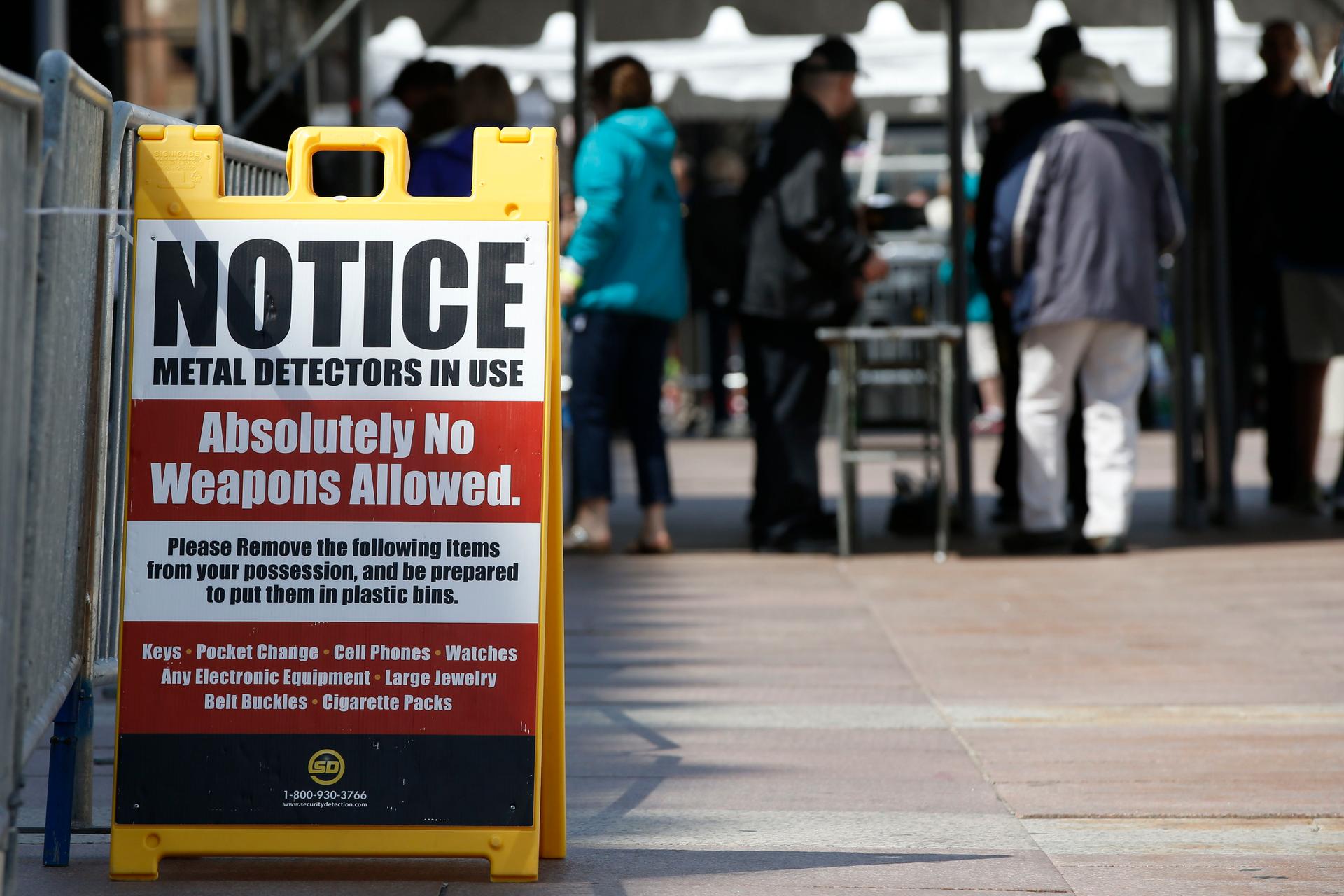Three years later, experts say the Boston Marathon is safer. But it will never be completely safe.
Security signs stand near the finish line of the 120th Boston Marathon.
The terrorist attack during the 2013 Boston Marathon shook the city, and three years later, security measures are still high: Drone and on-ground surveillance monitored this year's run. But security expert Juliette Kayyem says large events can't ever be 100 percent secured.
"What we do know how to do well is during events, high-profile events," she says, "we do know how to secure places that might be vulnerable, in particular the finish line for the Boston Marathon."
Kayyem is a former undersecretary for the Department of Homeland Security, and author of the book "Security Mom: An Unclassified Guide to Protecting Our Homeland and Your Home."
She worked for the government during the BP oil spill and the attempted underwear bombing of a Northwest Airlines flight to Detroit on Christmas 2009. She says even though security measures can only go so far in protecting large events or spaces, and despite the recent surge of news about terrorist attacks in Europe and the Middle East, it's unrealistic to think we are less safe now than we used to be.
"The notion that there's some moment in which we're safe and there's some white flag hanging over the United States saying, 'Oh, we're all clear now,' I think it's a delusional way to think about the risks we have as a nation," Kayyem says. "So I talk about our safety and security in terms of, 'Are we safer?' and 'Have we minimized the risk?' I think that is true, though the risk has changed."
She says gun safety is one of the major risks the US faces.
"No safety and security apparatus is going to stop every guy or brothers that are going to radicalize and have access to guns or weaponry," she says, "and go to some soft or semi-soft target — as the marathon was three years ago. And I think we do have to brace ourselves for that, and also invest in the response and preparedness apparatus that got us #BostonStrong."
Kayyem says there will come a time when people don't associate the Boston Marathon with the 2013 bombings, citing the 15th anniversary of September 11 as an example. And the way to get there is by continuing to invest in preventive security measures.
She says "resiliency is actually active" rather than a passive thing — "investments, planning, training, preparedness" — and in her book writes about the now-famous "Keep calm and carry on" posters created by the British government during World War II.
"It turns out that it was part of a very aggressive World War II public education campaign that [UK Prime Minister Winston] Churchill never allowed to happen," she says. "The posters were made and Churchill said he didn't want this slogan to go out [because it was too passive]."
She says Churchill didn't want his citizens to think they could get through the threat and hardship of war by sitting back and letting the war unfold.
"He knew the men had to stay in London and keep the engines of commerce going," she says. "He knew women had to go to work — they had to say goodbye to their children, who were sent out to the countryside. Resiliency is not sitting back in your chair and saying, 'Well, what will be will be.' And I think people need to remember that."
